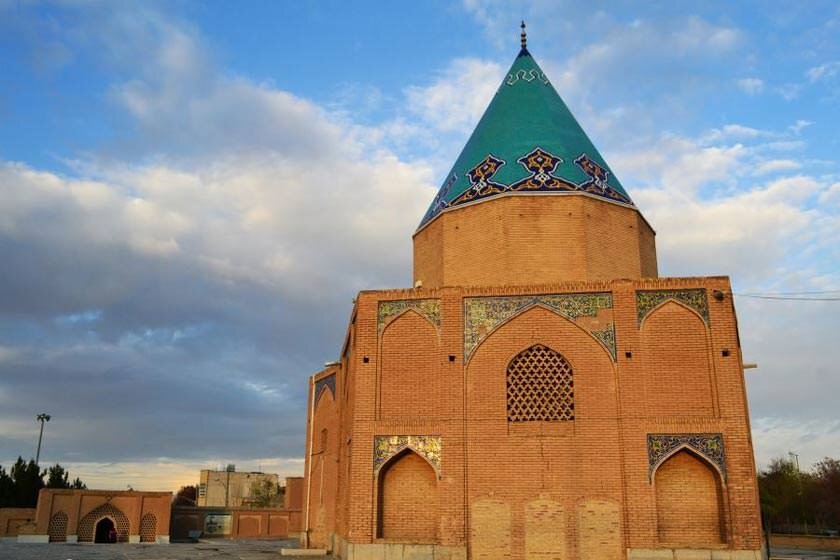Discover Baba Rokneddin mausoleum, a lesser-known destination in Isfahan

TEHRAN - Despite Isfahan's widespread fame and its millenary historical sites, there are still parts of the city that are lesser-known to tourists.
One of the less-visited places in the city is the mausoleum of Baba Rokneddin, which is not as well known.
One of the most famous mystics in the eighth century was Baba Rokneddin, whose brick tomb is located at a distance of five kilometers from Naqsh-e Jahan Square, which is the most crowded part of Isfahan.
Located in the cemetery of Takht-e Pullad (Takht-e Fullad), the modest mausoleum is capped by a conical dome. The tomb has a pyramidal structure with twelve panels. The current structure dates from the Safavid era (1501-1736).
The facade and exterior were covered in tiles. The base of the dome has five sides with five porches surrounding the structure below. Within the porches is the tomb with a marble tombstone.
Isfahan's oldest cemetery is Takht-e Fullad. Historical evidence and resources indicate that it dates back to the pre-Islamic era. The cemetery is more than 800 years old.
In the 13th century, during the Ilkhanid era, Takht-e Fullad was the most important cemetery in Isfahan, and many famous people of the city were buried in this cemetery.
Except for the tomb of Baba Rokneddin, the oldest structure in the graveyard, all mausoleums from the Ilkhanid era have been destroyed.
Massoud ibn Abdullah Beyzavi, known as Baba Rokneddin, was born in Beyza, southern Fars province. Baba Rokneddin lived in Isfahan during the reign of Abu Sa'id Bahadur Khan, the ninth ruler of the Ilkhanate. It was Baba Rokneddin who developed and continued Theoretical Sufism, which had been founded by Ibn al-Arab.
People respected Baba Rokneddin as a great figure of mysticism. It was for this reason that he was referred to as "Baba" (which means father in Persian).
ABU/AFM
Leave a Comment